he effects of oral smokeless tobacco administration on endurance performance
homs Znoni*,Enrio Tm,Polo Bruseghini,Fbio Pizzolto,Lorett Frneshi,Mssimo Brlo,Crlo Cpelli,e,Pol Cesri,Cristino Chimuler
aNeuropsychopharmacology Laboratory,Department of Diagnostic and Public Health,University of Verona,Verona 37134,Italy
bMind,Brain and Behavior Research Center CIMCYC,Department of Experimental Psychology,University of Granada,Granada 18071,Spain
cDepartment of Neurosciences,Biomedicine and Movement Sciences,School of Exercise and Sport Science,University of Verona,Verona 37131,Italy
dDepartment of Experimental and Clinical Medical Sciences,University of Udine,Udine 33100,Italy
eDepartment of Physical Performances,Norwegian School of Sport Sciences,Oslo N-0806,Norway
Abstract Background:Smokeless tobacco is widely used by athletes to enhance performance.Nicotine is a central nervous system stimulant and acts on cardiocirculatory and metabolic systems,involving tissue blood flow and circulatory vasoreactivity.The aim of this study was to investigate the effects of the oral smokeless tobacco(Swedish snus(SS))on the perception of fatigue and time to exhaustion(TTE)during moderate-intensity aerobic exercise.Methods:Fourteen healthy non-tobacco male users were recruited for a double-blind,controlled crossover design(SS vs.snus placebo(SP)).Subjects were tested for 3 sessions:experimental session 1(Exp1)consisted of an incremental test to determine the maximal aerobic power output(Wmax),whereas Exp2 and Exp3 consisted of exercising at 65%Wmaxuntil exhaustion in SS or SP conditions.During Exp2 and Exp3,muscle and cerebral oxygenation was assessed by means of near-infrared spectroscopy,and the rating of perceived exertion(RPE)was recorded.Results:Comparing SS with SP tests,significant differences(p<0.05)were found in the values of cerebral(~3%)and muscular tissues oxygenation(~4%)in the first 30min of exercise.The RPE values were not significantly different between the 2 conditions(SS vs.SP).No significant difference was found in TTE(SS:54.25±21.84 min;SP:50.01±17.03min).Conclusion:This study showed that muscular and cerebral oxygenation increased significantly with snus administration during an endurance exercise until exhaustion,but this did not affect fatigue perception and TTE.The results showed that snus could not be considered an ergogenic substance in non-tobacco users.
Keywords:Exercise endurance;Maximal aerobic power;Nicotine;RPE;Smokeless tobacco;Snus;Time to exhaustion;Tissue oxygenation


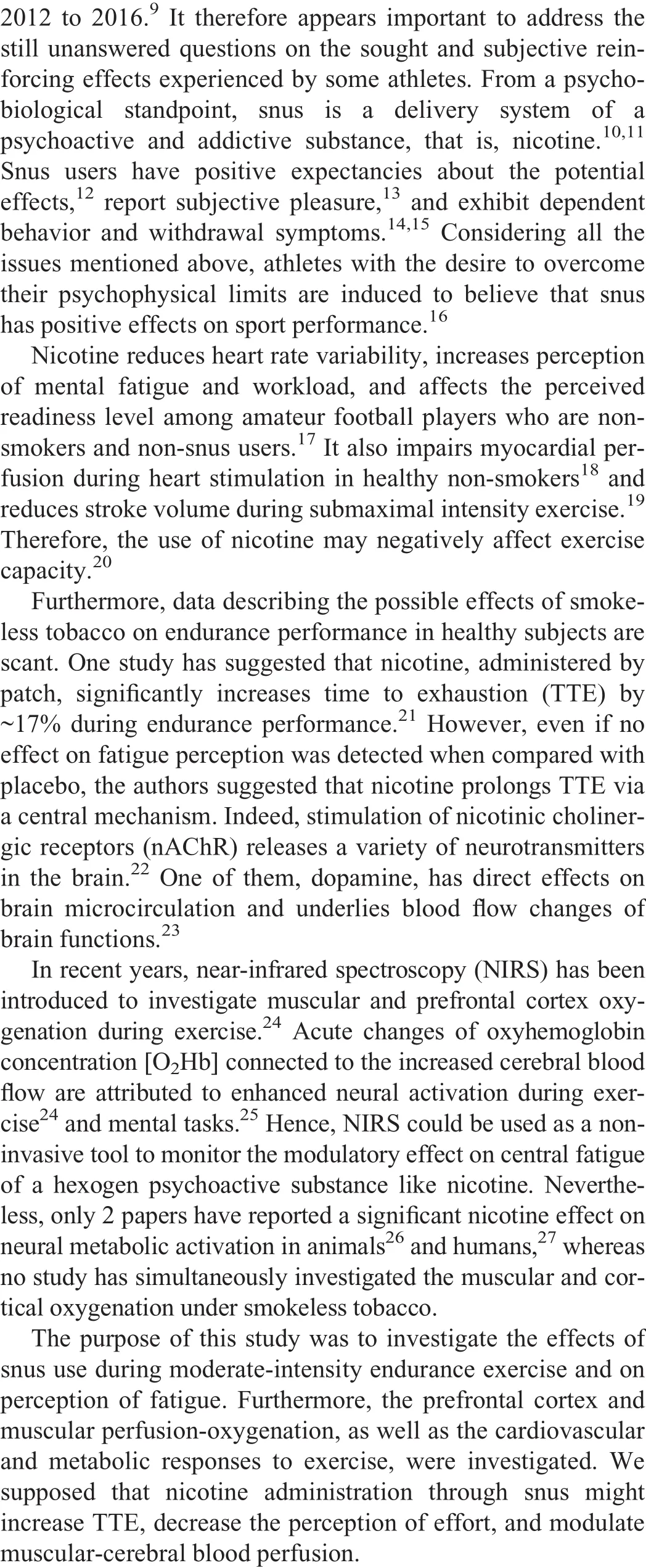

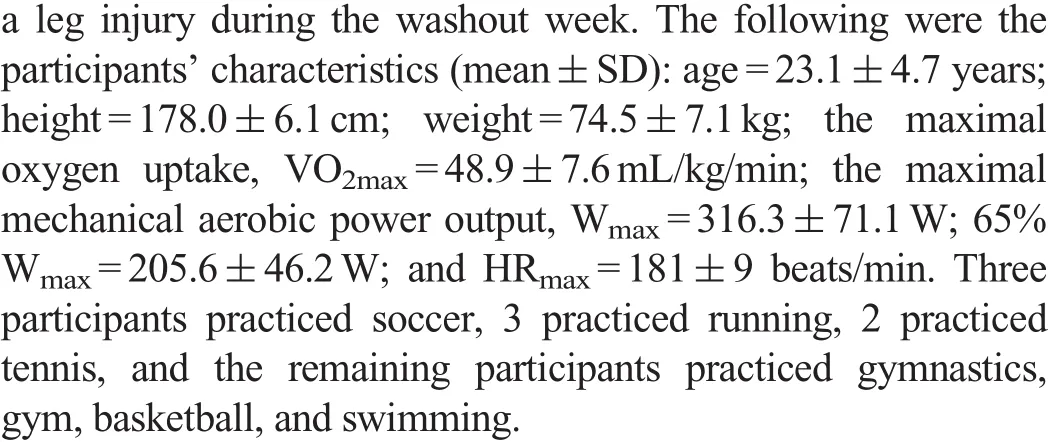
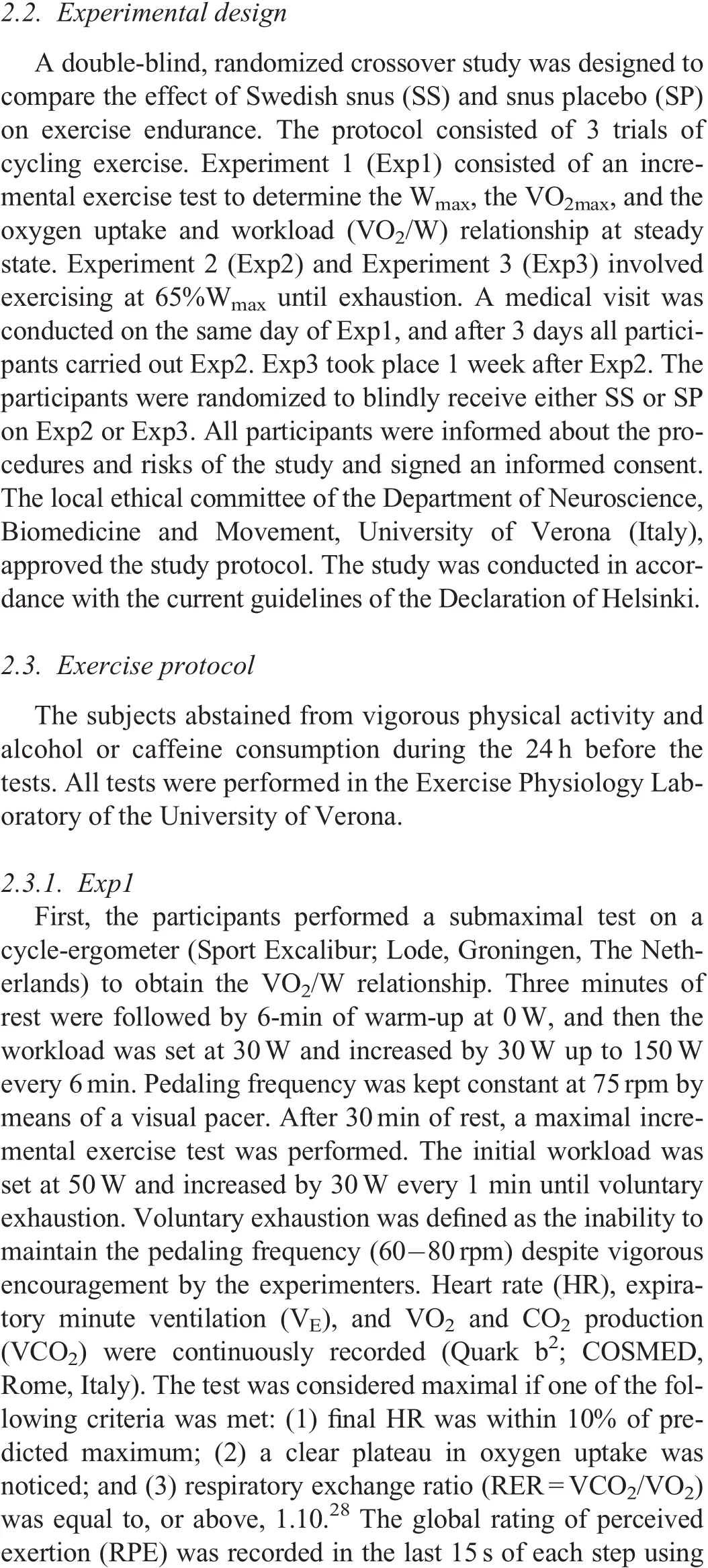
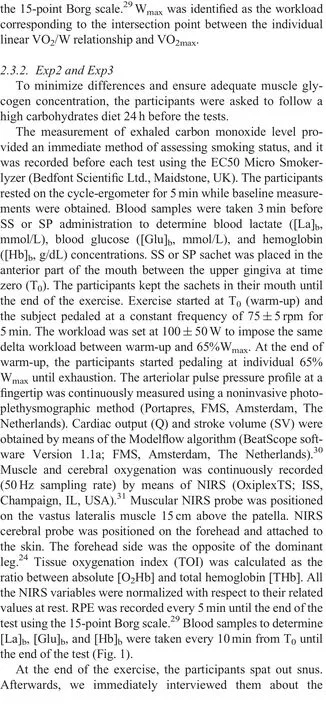
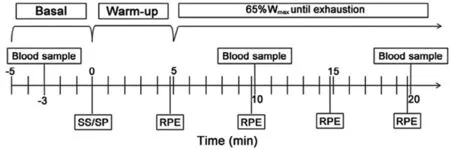
Fig.1.Graphical representation of the experimental protocol in Exp2 and Exp3.RPE=rating perception of effort(Borg scale29);SP=snus placebo;SS=Swedish snus.
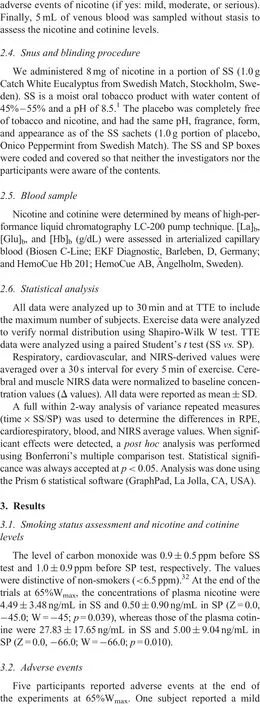

Fig.2.Borg scale values(mean±SD)in the first 30 min and at TTE during SS and SP.*p<0.05,compared with SP;n=12.SP=snus placebo;SS=Swedish snus;TTE=time to exhaustion.



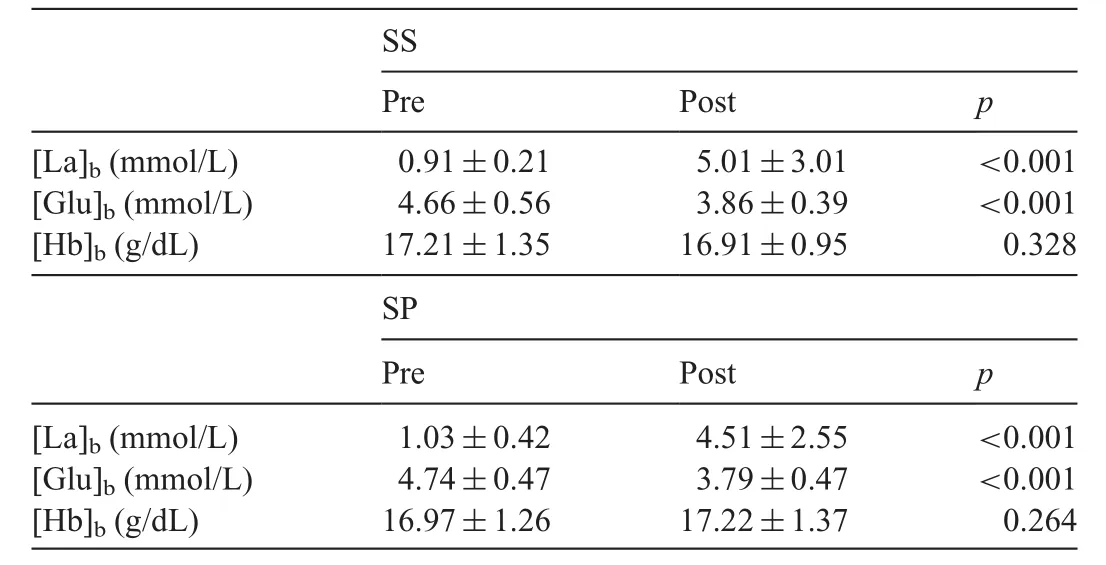
Table1 Blood sample concentrations of lactate([La]b),glucose([Glu]b),and hemoglobin([Hb]b)in SS and SP conditions before prolonged exercise at baseline and at exhaustion(mean±SD).

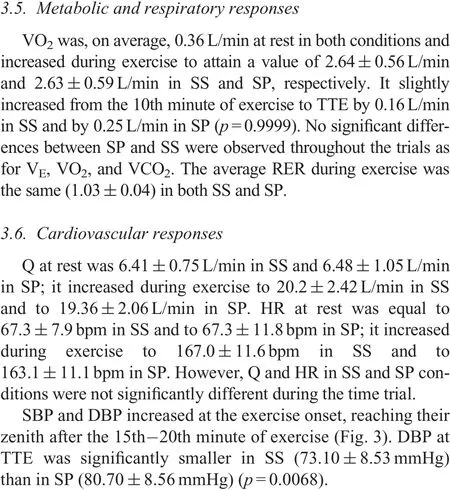
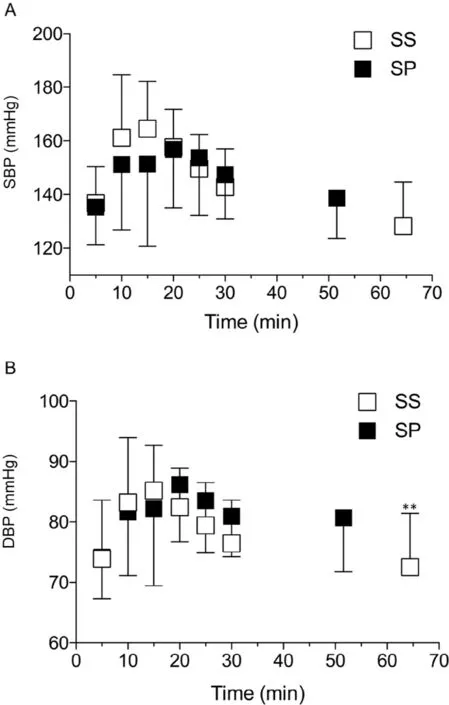
Fig.3.SBP(A)and DBP(B)values(mean±SD)in the first 30 min and at TTE during SS and SP.**p<0.01,compared with SP;n=12.DBP=diastolic blood pressure;SBP=systolic blood pressure;SP=snus placebo;SS=Swedish snus;TTE=time to exhaustion.



Fig.4.Values of△TOI(A,B),△[THb](C,D),△[O2Hb](E,F),and △[HHb](G,H)in the first 30min of exercise and at TTE during SS and SP measured in the prefrontal cortex(C)and on vastus lateralis muscle(M)(mean±SD).*p<0.05,**p<0.01,***p<0.001,n=12.[HHb]=deoxyhemoglobin;[O2Hb]=oxyhemoglobin;SP=snus placebo;SS=Swedish snus;TOI=tissue oxygenation index;[THb]=total hemoglobin;TTE=time to exhaustion.

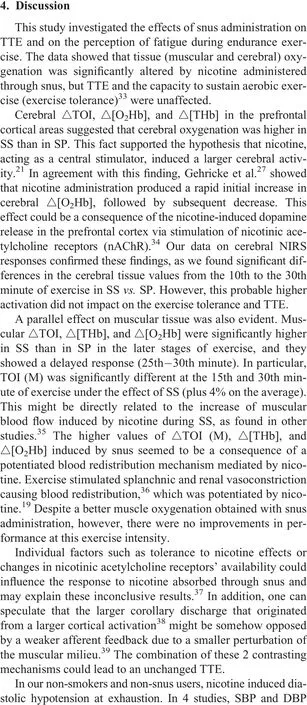
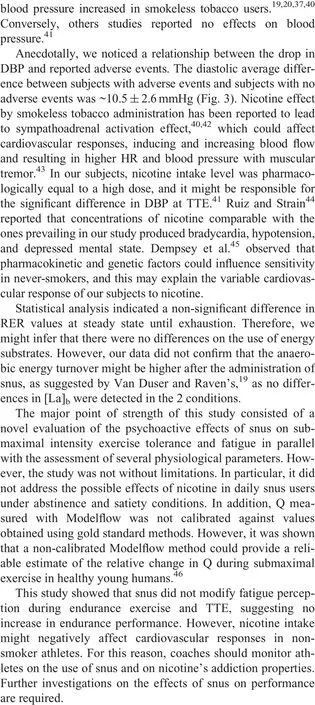
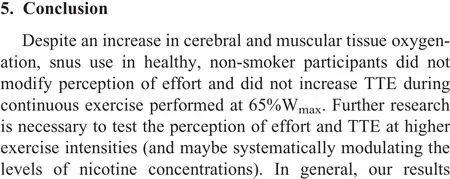



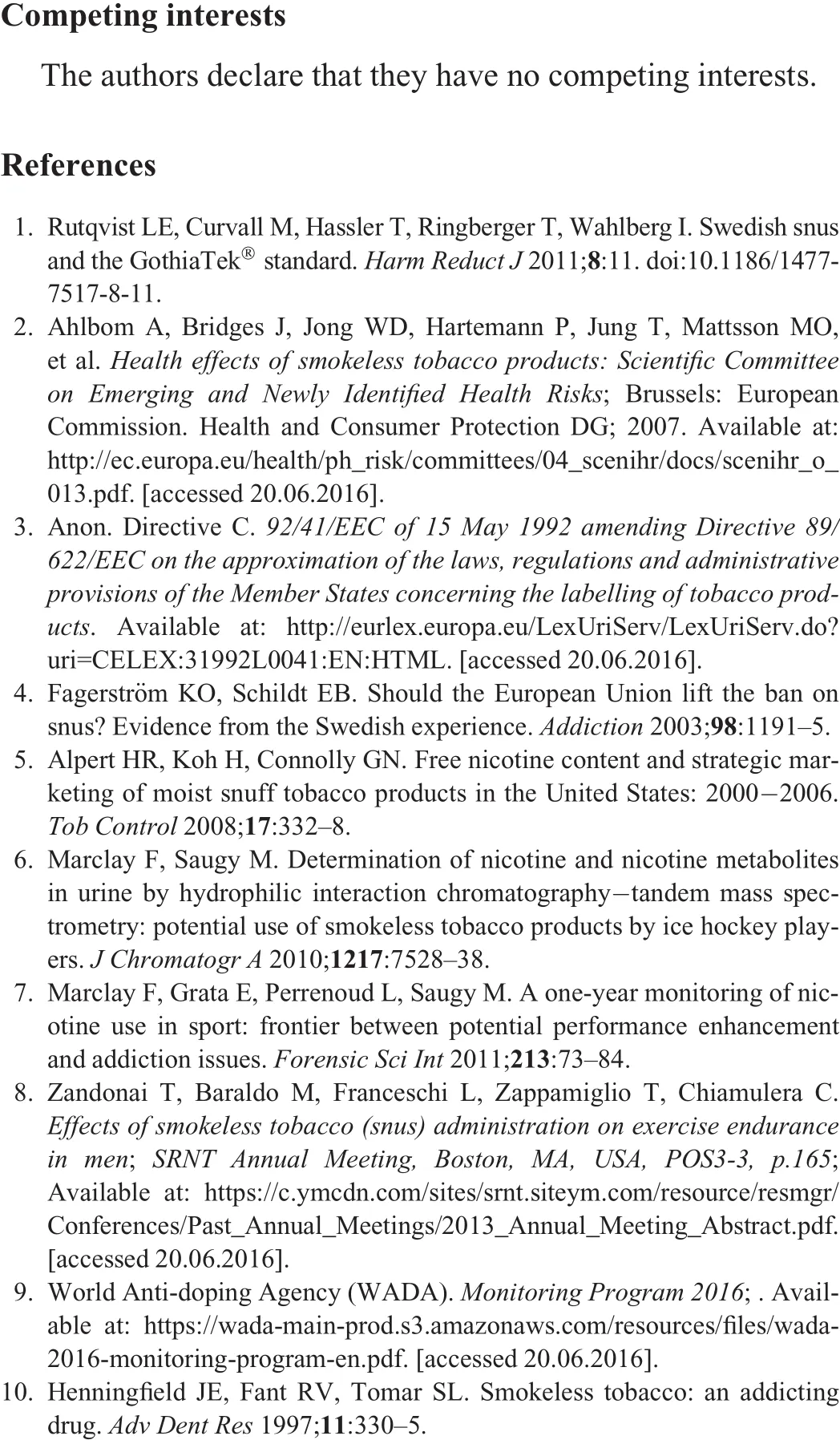
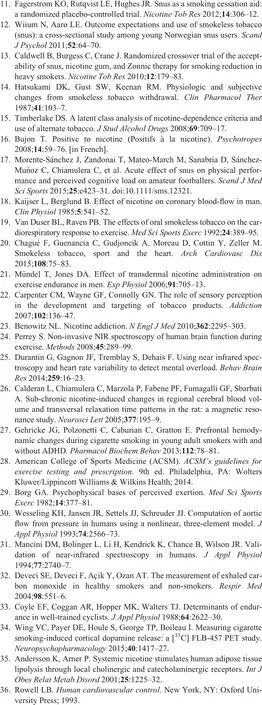
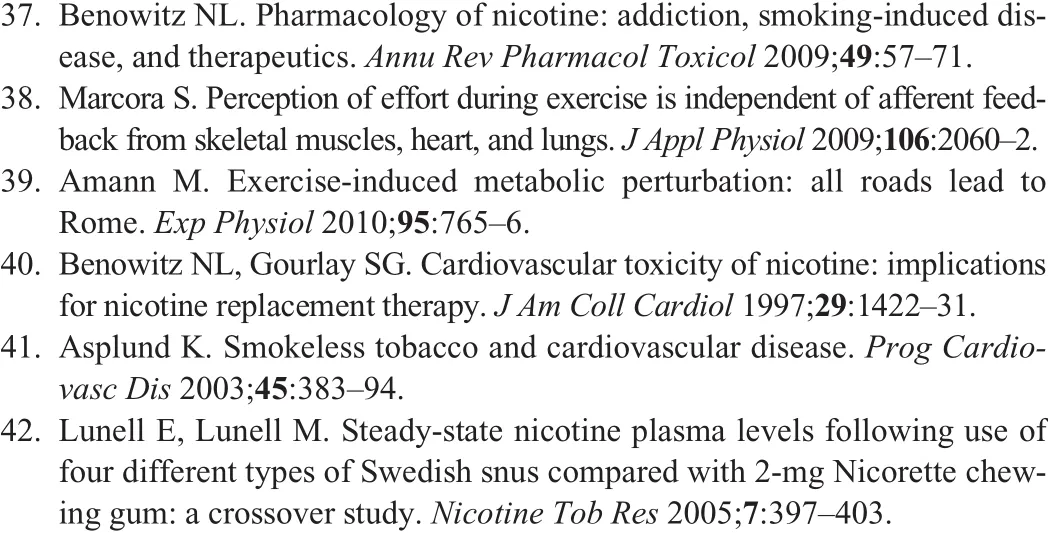
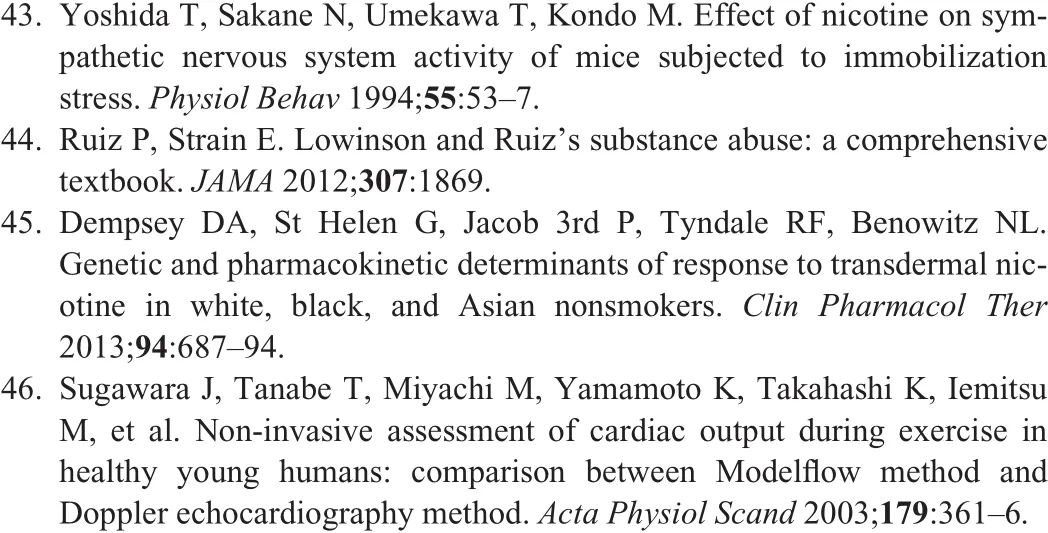
 Journal of Sport and Health Science2018年4期
Journal of Sport and Health Science2018年4期
- Journal of Sport and Health Science的其它文章
- Sport participation and vigilance in children:In fluence of different sport expertise
- Pacing and predictors of performance during cross-country skiing races:A systematic review
- he in fluence of physiobiomechanical parameters,technical aspects of shooting,and psychophysiological factors on biathlon performance:A review
- Limb symmetry index in competitive alpine ski racers:Reference values and injury risk identification according to age-related performance levels
- A comparison of lower limb stiffness and mechanical muscle function in ACL-reconstructed,elite,and adolescent alpine ski racers/ski cross athletes
- he BRICS Council for Exercise and Sport Science(BRICSCESS)—A new era has dawned
